Office Hour: Margaret Schaus

The lead research and instruction librarian gives us a tour of her office.
Many a visitor to Lutnick Library has done a double take when passing the office of Lead Research and Instruction Librarian Margaret Schaus. Commanding the back wall and hard to miss is an enormous painting of St. Sebastian, pierced with arrows and wearing only a loincloth and a serene expression. Likely painted between the late 15th and early 16th century, the work (a 1942 gift to the College by the daughter of an alumnus) is fitting office décor for the creator of Feminae: Medieval Women and Gender Index. The open access database, sponsored by the libraries of Haverford College and the University of Iowa, currently has more than 44,000 records covering journal articles, book reviews, translations, images, and more, all related to women and gender from 400-1500 in Europe and the Middle East. Schaus keeps the database updated with the help of students. Schaus, who earned a master’s in medieval studies from the University of Toronto and a master’s in library and information science from the University of California, Berkeley, started at the College in 1987. She’s a familiar figure to many Fords who have relied on her for help over the years with research for their senior theses. “Every Haverford history thesis writer starts out with a summer meeting with me [before their senior year], and then another meeting in September,” says Schaus. “Then there’s contact back and forth through the year as they’re working. I work with political science and classics majors as well. Particularly for history, what they need are primary sources. The availability of those really determines what you can do. Because you can go into it imagining that there’s all kinds of material, but it is often complicated tracking down older texts and interpreting them. And that’s what I help students do.”
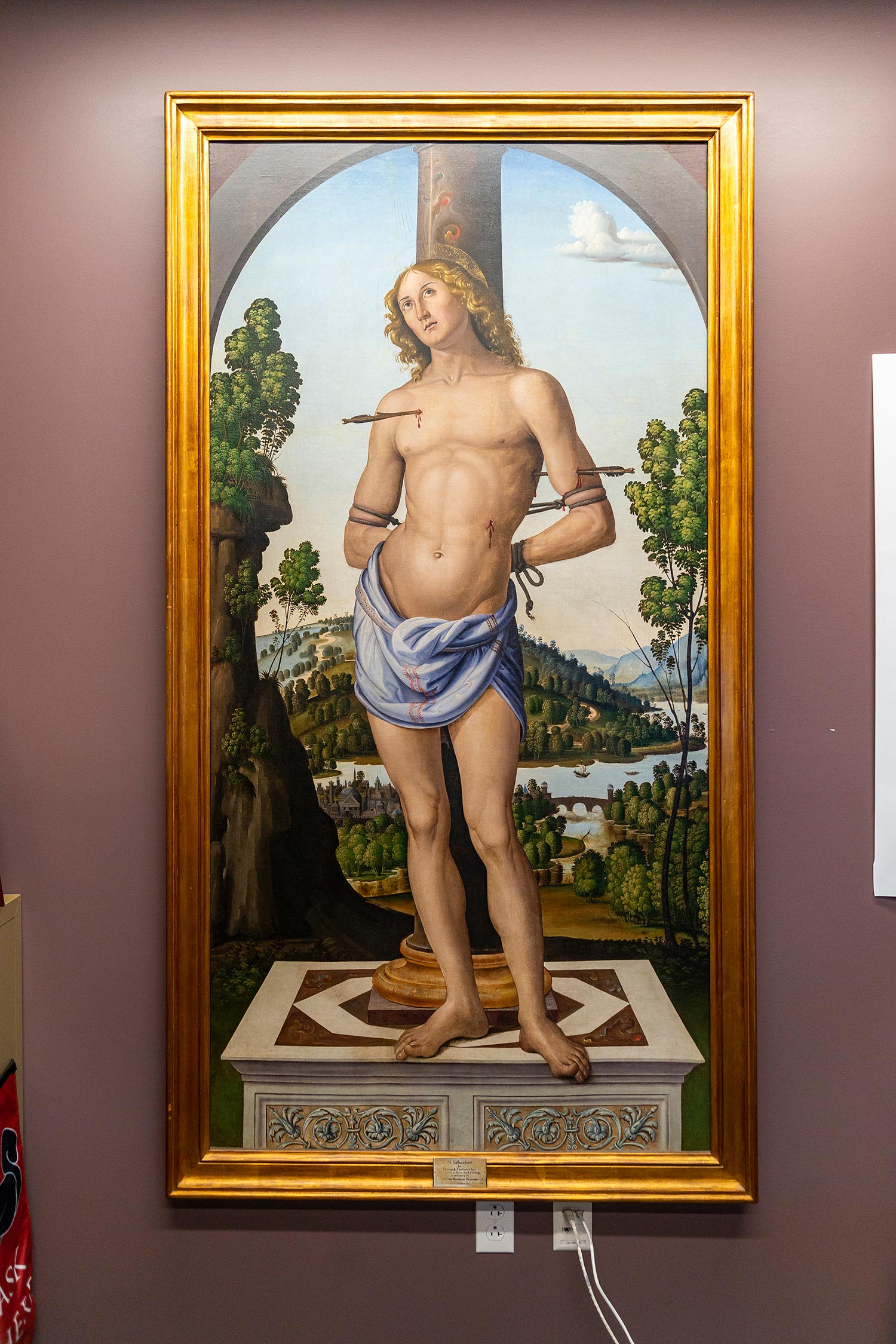
➊ Painting of St. Sebastian: Before the library was renovated, this was on permanent display for many years and then it went off to storage. When construction was done, the idea was, “Let’s bring things back.” So I spoke up for Sebastian. This was painted for an altarpiece in Italy. At that point he was the saint invoked against plagues, the Black Death. So there’s a connection with our current situation. The rays coming down indicate a divine grace. The painting is such a marvelous combination of ideas. There’s the Renaissance depiction of the beauty of the body, and the greater knowledge of anatomy. St. Sebastian also held great interest for 20th-century artists like Yukio Mishima, who were intensely drawn to the eroticism and the idea of self sacrifice. It really is a wonderful thing, and people walking by will often just come in and want to see it.
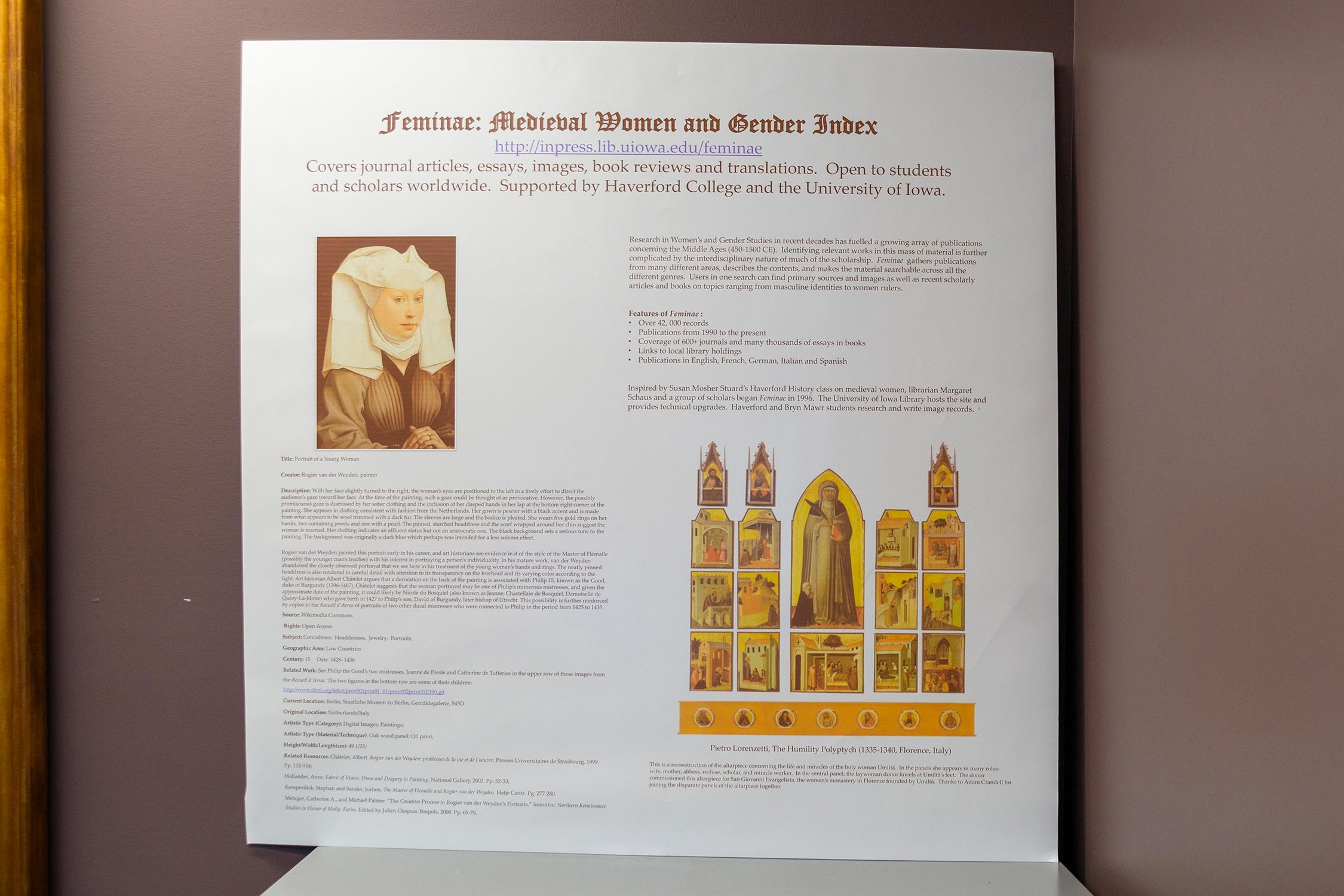
➋ Poster for the Feminae Index: I started the website in 1996, and it represents the work of more than 70 students over time. I have one intern per semester, and then I have a research assistant who puts in time as well. They do a lot of the research and writing for the image records—there’s over 500 of those. There’s just a ton to keep up with, new books being published, new scholarly papers coming out. We have an “article of the month” feature tied to recent news. In December, we had one about a Viking tomb that was excavated in the 1880s and has always been held up as the model for what a warrior’s tomb would contain. Well, a couple of years ago, a group tested the bones and discovered that the buried warrior was biologically female. Then, of course, it hit the fan, because there were scholars who could not accept that, who said, “It must be the wife who’s being honored for what the husband did.” But the people who did the testing have been pushing back, saying, “Two horses were sacrificed and are in there, and the woman is wearing military clothes.”
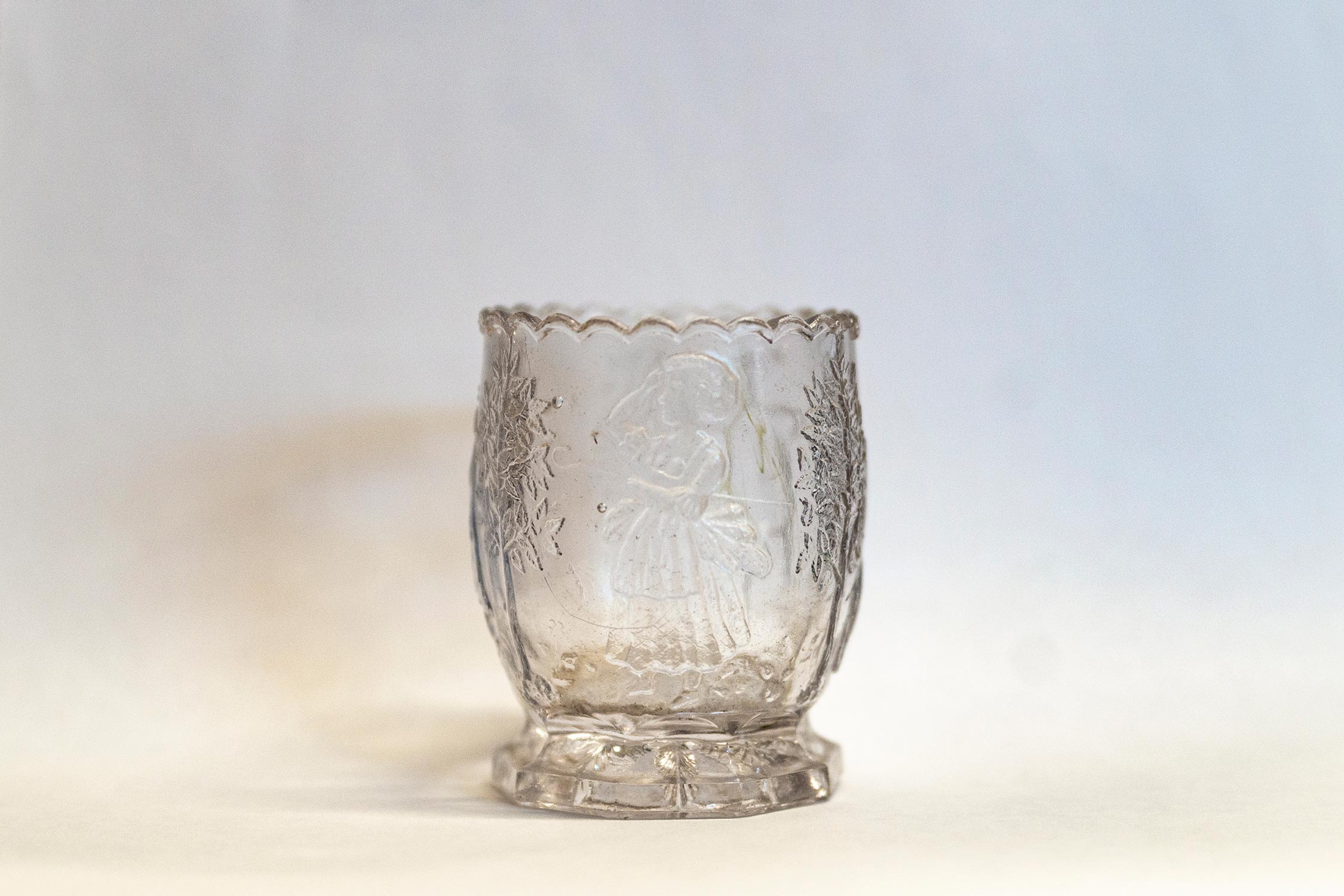
➌ Nursery rhyme pressed glass: [Professor Emeritus of History] Sue Stuard, who is my good friend, gave that to me. It’s part of a set that shows three stories: Little Bo Beep, Tom the Piper’s Son, and Puss in Boots. They date from the late 19th century. Pressed glass represents an expansion of consumer goods—these were mass produced and cheaper, and were made in many special shapes, all intended for children to play with.
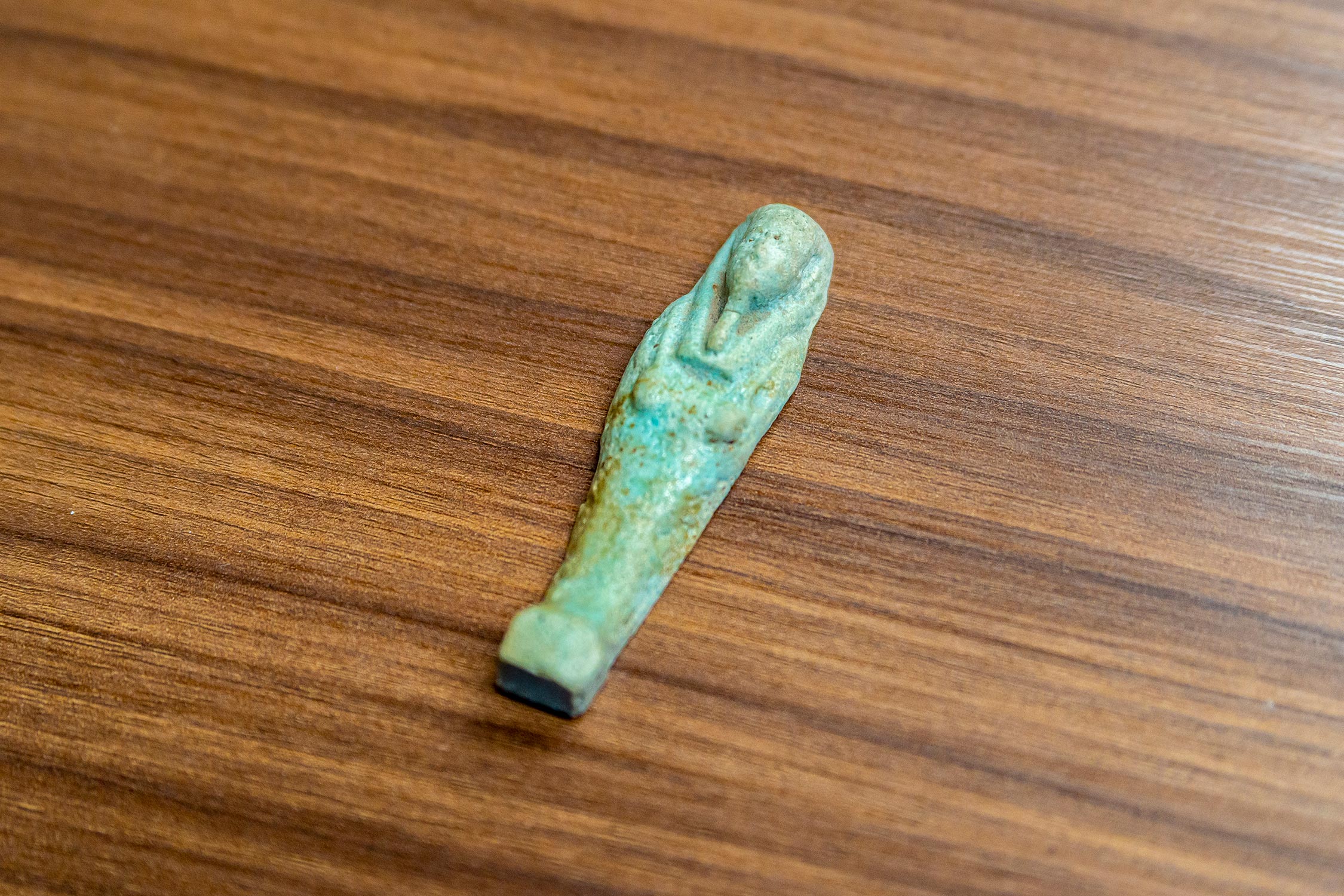
➍ Ushabti figurine: They’re the helpers that are put in the tomb with Egyptians. I got this when I was 12 or 13 and I thought I was going to be an archaeologist—until my mentor explained to me that women couldn’t do fieldwork. This was 1965. I was in a small town in Illinois, and Mr. Lockwood was the person who had gone to Israel and done archaeological digs. I took his word as gospel. So, I decided that the Middle Ages looked a lot better, because I could use manuscripts in a library.
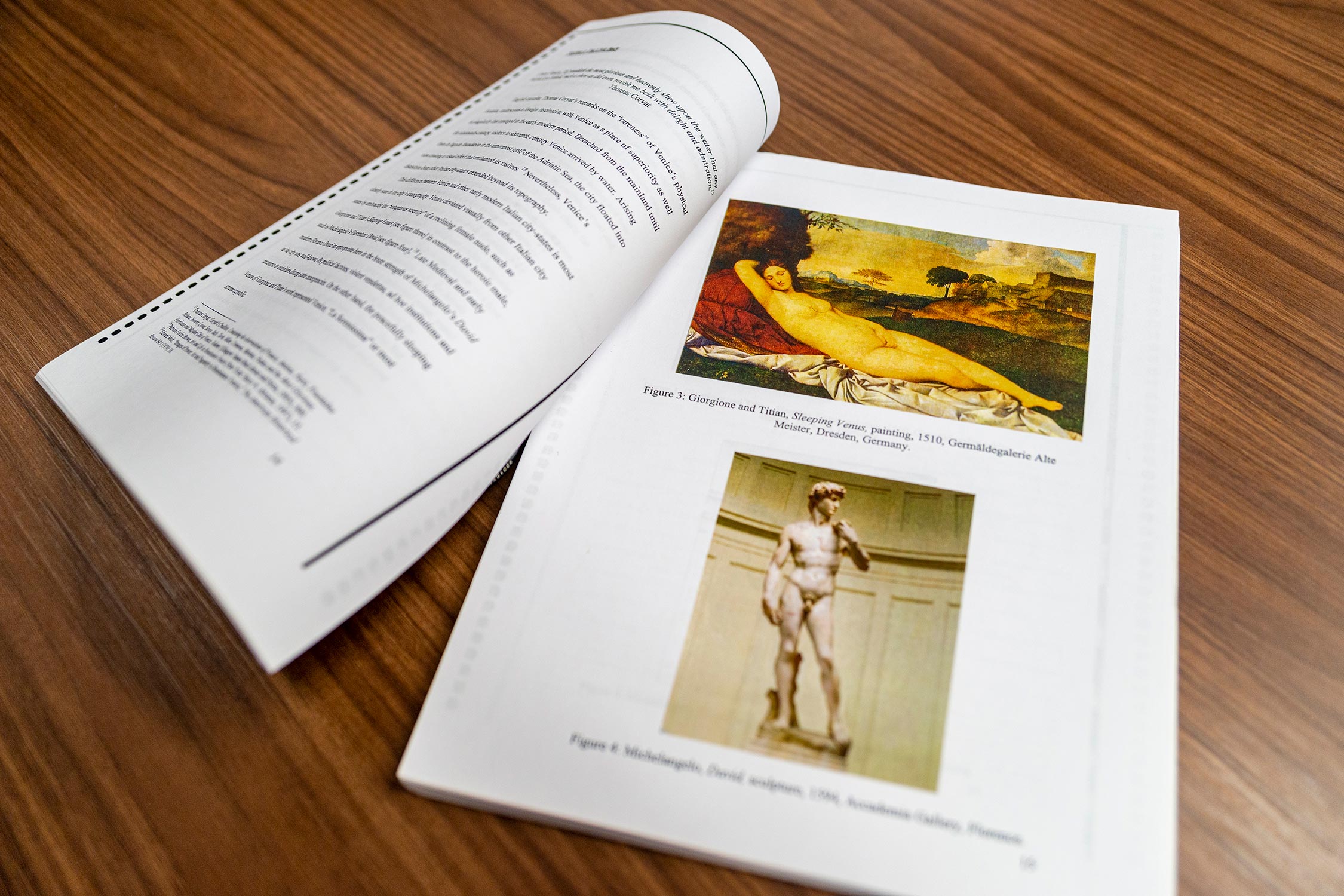
➎ Senior thesis by Meaghan Ryan ’11: You can’t go into a senior thesis project with your mind made up about what you’re going to find. You have to be open, because sometimes the research takes you in a direction you weren’t expecting. A great example is this thesis. Meaghan was interested in a female poet in Venice in the early modern period. I think it was probably November when she realized that art was really important and that the way Venice was represented in an allegory, as a female, was something that she had to look at. She went to Venice with CPGC funds in January, saw artworks, and came back and incorporated them into her thesis. For a history person, who’s always worked with texts, to take on images and art history was really amazing.
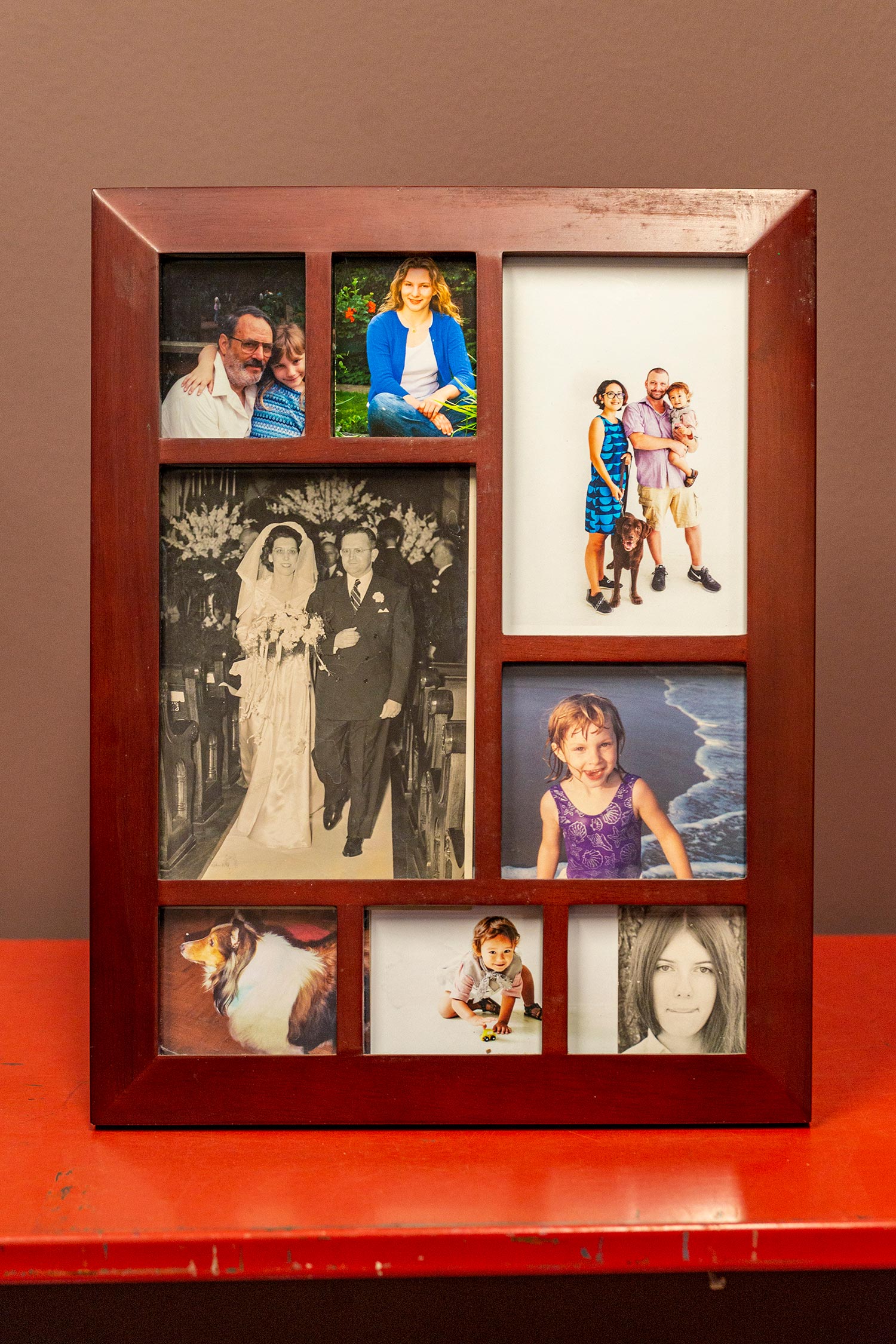
➏ Family photos: That’s my husband, and my daughter Amelia, who’s now a Ph.D. student at Penn, working on the reception of The Iliad and The Odyssey in Greek tragedy, and in Hellenistic epic. On the right is my son, Anselm; his wife, Julie; and their little boy, Noah. They live in Tokyo. Anselm is a translator. And that’s me (bottom right) in 1971, when I started college at the University of Illinois. The dog is Theseus, who passed away a year and a half ago. (All of our pets have had classical names.) The wedding photo is of my parents, who were married in 1946. There’s a story there. My father received a Dear John letter when he was in India during the war. Somehow, a neighbor in Pittsburgh told a friend in Illinois, and my mother started writing to him. She was supposed to be an old maid and take care of her parents, but they surprised everyone and got married.